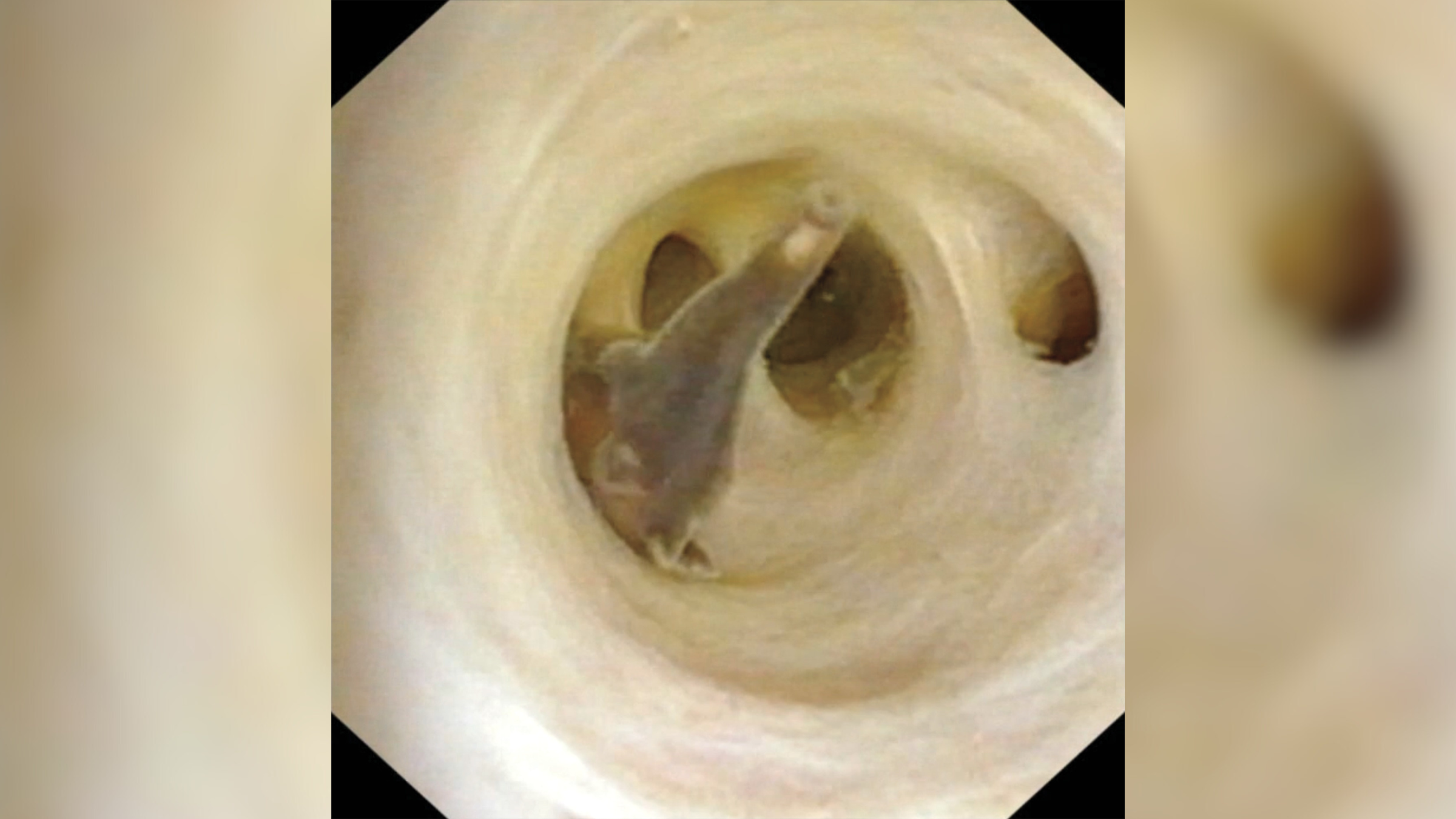Watch parasitic worms get pulled from man's abdomen after surprise discovery during routine surgery
When doctors peered into a man's abdomen during routine surgery, they didn't expect to find five living worms in there.
When a man in China went to the hospital for routine surgery, his doctors found something far more unusual: live worms squirming inside his abdomen.
Using a small camera inserted into the 70-year-old's abdomen — who was due to undergo surgery to remove a tumor to treat colon cancer — doctors discovered five large, brown parasitic worms in his biliary tract, the collection of organs and connecting tubes that the body uses to produce, store and secrete bile — a yellowy-green fluid that aids fat digestion.
The doctors extracted the critters and identified them as Clonorchis sinensis, more commonly known as the Chinese or oriental liver fluke. The doctors published details of their find on Dec. 28 in the New England Journal of Medicine.
C. sinensis is normally found in East Asia and eastern Russia, but cases have been reported in non-endemic countries such as the U.S. Across the globe, more than 200 million people are estimated to be at risk of infection.
Related: Australia woman's brain invaded by parasitic worm that normally infects pythons
A 70-year-old man undergoing cholangioscopy to evaluate dilatation of the common bile duct was found to have flatworms in his biliary tract (shown in a video). Read the full clinical case: https://t.co/OK4X48EOne pic.twitter.com/lbSTv5jaqZDecember 30, 2023
Humans become infected with C. sinensis after ingesting the parasites' larvae. Usually this happens when people eat raw or undercooked freshwater fish or shrimp in areas where C. sinensis is found, although it is unclear how this particular man got infected. According to The Centers for Disease Control and Prevention (CDC), people may become infected with C. sinensis in the U.S. as a result of eating contaminated fish imported from endemic areas.
Once inside the digestive system, the larvae emerge from sac-like pockets in the small intestine before migrating to the biliary tract, which includes the liver, gallbladder and bile ducts. The liver produces bile, which the gallbladder stores and the bile ducts transport to the small intestine.
Get the world’s most fascinating discoveries delivered straight to your inbox.
Most people who are infected with C. sinensis have a small number of worms in their body so don't experience any symptoms. However, having higher numbers of worms can cause abdominal pain, headaches and dizziness. If left untreated, the parasite can spend the rest of its life in the body, sometimes living for up to 30 years and cause serious symptoms, such as liver enlargement and malnutrition.
Doctors normally diagnose C. sinensis infection after identifying the parasite's eggs in a patient's stools. However, in this case no eggs were found. Instead, the man was undergoing a medical procedure called a cholangioscopy, where doctors use a long, thin tube with a camera inside to examine the biliary tract.
This was because a week beforehand he'd been diagnosed with a type of colon cancer which affects the glands lining the final part of the large intestine that connects to the rectum.
Doctors were subsequently planning to conduct keyhole surgery to remove his tumor and gallbladder when they stumbled across the slimy surprise. They then removed all of the worms and prescribed him antiparasitic drugs to clear the infection. He also started a course of chemotherapy to treat the cancer in his large intestine.
Ever wonder why some people build muscle more easily than others or why freckles come out in the sun? Send us your questions about how the human body works to community@livescience.com with the subject line "Health Desk Q," and you may see your question answered on the website!

Emily is a health news writer based in London, United Kingdom. She holds a bachelor's degree in biology from Durham University and a master's degree in clinical and therapeutic neuroscience from Oxford University. She has worked in science communication, medical writing and as a local news reporter while undertaking NCTJ journalism training with News Associates. In 2018, she was named one of MHP Communications' 30 journalists to watch under 30.



